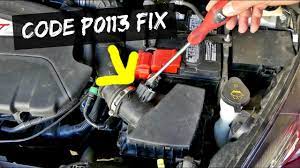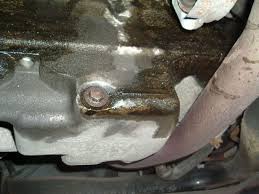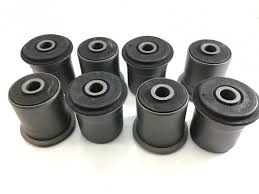How to reduce exhaust noise is very important to all drivers who are sound in mind. Often, the muffler is the source of noise in an exhaust system. When you have a new or replacement muffler installed on a car or truck, it’s important to check that it doesn’t create more noise than your old one did. Some mufflers are designed for maximum performance and little else; others are designed primarily for reducing noise. If you replace your current muffler with one that creates more noise than before, keep in mind that there are ways to reduce this problem: installing an extra silencer between the engine and the outside world can help reduce unwanted noise.
How to Reduce Exhaust Noise
Exhaust noise is the sound of your car’s exhaust system. It’s caused by the flow of hot gases through the exhaust pipes and mufflers, which produce a turbulent flow that creates loud noises as they pass through. Exhaust noise also occurs when these gases are under pressure, like when you rev up your engine.
When you accelerate quickly or drive at high speeds, certain parts of your car experience higher temperatures than others—the hottest areas get so hot that they glow red! This heat causes condensation in some areas, which can also contribute to increased exhaust noise.
Exhaust noise isn’t just annoying; it’s also potentially dangerous. When cars rev up their motors or accelerate quickly and loudly, pedestrians may not hear them approaching or notice any warnings they may have been given until it’s too late. This can lead to serious injuries and fatalities if pedestrians aren’t paying attention while crossing streets or walking across parking lots near busy roads where many cars pass through daily (or even simply living near busy streets).
Inspect the current muffler.
Exhaust systems come in a variety of shapes and sizes, but regardless of the type you have, it’s important to inspect the muffler regularly. The following are some areas that require special attention:
Check for cracks or holes in the metal casing. Check for rust that has built up inside the casing. Look out for dents or bends in the casing, which could affect its ability to funnel exhaust gas away from your engine. Make sure there are no loose parts within or attached to your muffler (such as bolts). Check any loose nuts and bolts on either side of your vehicle’s exhaust system as well; if they’re not secure enough, tighten them with a wrench or ratchet before driving off again!
Choose a new low-noise muffler.
There are two ways you can reduce exhaust noise. The first is by replacing your existing muffler with a new one that is specifically designed to help muffle sound. These mufflers have straight-through designs, which help prevent the sound waves from being reflected off of the walls of your exhaust system, and they’re made of stainless steel to resist corrosion. They also feature larger tailpipes than traditional mufflers so that more air passes through them as it exits the car’s tailpipe—and thus less noise gets released into the environment around you.
A second option for reducing exhaust sound is to install an aftermarket performance catalyst (PC). These devices attach directly onto your engine and work in conjunction with other emissions equipment such as catalytic converters and oxygen sensors to reduce harmful gases like carbon monoxide (CO) and unburned hydrocarbons (HC) while simultaneously reducing noise levels produced by unburned fuel that escapes during combustion processes within engines themselves.
Purchase an exhaust pipe reducer and couplings to connect the new muffler.
There are two ways to connect the new muffler to your old exhaust pipe:
- You can use a reducer and coupling to connect the new muffler.
- You can use a reducer by itself to connect the new muffler.
Remove the old exhaust.
- Remove the old muffler.
- Remove the old exhaust pipe.
- Remove the old exhaust pipe clamps.
- Remove the old exhaust pipe hangers, if applicable (for example, if your car has a catalytic converter).
- Disconnect any other pipes that run from below to above or inside to outside of your vehicle’s bodywork, such as gas lines or fuel lines for other vehicles that run on diesel fuel rather than gasoline—you may have noticed some black smoke coming from your tailpipe before this point; this is because these are leaking vapors into your system!
Install the new muffler.
- Position the new muffler so that it’s hanging vertically.
- Connect the exhaust pipe to an existing exhaust connection on your car.
- Attach the new muffler hanger to the mounting bracket on your car using a socket wrench.
- Slide the new muffler into place over the muffler hanger and tighten with a cordless drill until secure.
Test-drive the car.
Before you take the plunge, test-drive the car. Listen for exhaust noise and any other strange sounds that arise when you accelerate or make turns. If you hear anything out of the ordinary, don’t buy it! You want to be sure that your new car doesn’t have any issues before signing on the dotted line.
After a few miles behind the wheel, check how well your vehicle handles in heavy traffic and whether its acceleration makes it unsafe to drive on highways. Make sure that all safety features are functioning properly—including seatbelts (they should lock securely) and airbags (they should deploy quickly). At this point, you may want to consider an emissions test if applicable; many states require these tests as part of their emissions inspection procedure but they vary by state so check with yours if needed before buying a used car from an individual seller who may not know what’s required where he lives/sells cars).
Replacing the muffler with a higher-quality one will reduce noise.
A muffler’s job is to reduce exhaust noise, so if your car is making too much noise and a new muffler isn’t in the budget, there are other things you can do. Replacing the muffler with a higher-quality one will reduce noise. A good way to tell if you need to replace your muffler is by listening for irregular sounds in the engine and by smelling exhaust fumes when you turn off the engine. Read Also: How to Fix Engine Sounds Loud When Accelerating
Mufflers are made of metal or ceramic materials that resist corrosion, which helps them last longer than other types of parts on your vehicle. Metal gasoline engines typically have an aluminum or steel body that houses all of its moving parts while ceramic engines use ceramics instead of metals like aluminum or steel because they have better heat resistance properties than traditional materials found in civilian vehicles such as those used by police officers who need their cars’ abilities during emergencies.
Additionally, exhaust noise is annoying, but it can also be dangerous. It’s important to know how to reduce exhaust noise so you can protect your hearing as well as other drivers and pedestrians. Here are some ways to make your car’s exhaust quieter:
Hanging the exhaust system.
Hanging your exhaust system can reduce noise, because it reduces the weight of the exhaust system. This also reduces its effect on the car’s suspension and weight.
Fitting a resonator.
A resonator is a device that is fitted to the end of an exhaust system and increases the sound of the engine by increasing the length of the exhaust pipe. It can be made of metal or plastic, depending on your needs and budget.
The principal reason for fitting a resonator to an exhaust system is to increase its volume and thus level out any dips in noise as you accelerate or decelerate. This will make your car sound louder on acceleration but also give it more power from a standing start as well as give off a more even tone throughout all gears.
Getting a custom exhaust pipe.
A custom exhaust pipe is created to fit your vehicle. Custom pipes are made from either steel or stainless steel, and they can be made to fit the exhaust system, engine, and body of your vehicle. A custom pipe might include a y-pipe or bubble cap muffler.
Choosing the right muffler.
The muffler is the only part of an exhaust system that reduces noise. It does this by slowing and cooling down the gases as they leave the engine, which makes them quieter. Mufflers are not to be confused with exhaust pipes, which are just pieces of metal (or plastic) connecting your muffler to other parts of your car or truck.
Mufflers come in a variety of designs and materials, but their purpose is always to reduce noise produced by engines. They can also help increase fuel efficiency, reduce emissions and allow for greater horsepower at lower RPMs.
Changing your muffler can reduce your vehicle’s noise, but you should also look at other parts of the exhaust system.
A muffler is a device used to reduce the noise of an exhaust system. They can be made of metal or fiberglass, and they come in various finishes. It is important to note that not all mufflers are created equal; some are designed to reduce engine noise as well as sound coming from your engine’s tailpipe.
Mufflers can also be fitted at the end of your exhaust pipe (known as “headers”), or at the tailpipe itself. The latter placement offers more protection against rusting and corrosion, but it can also increase weight on your vehicle due to increased materials needed for installation.
Regardless of which type you choose for your vehicle, remember that it’s important not just for reducing engine or tailpipe noise—you should also look at other parts of the exhaust system before deciding if installing one will have any effect on reducing overall levels coming from under hoods across America!
Conclusion
The exhaust system on your vehicle is designed to reduce the amount of noise you hear while driving. The goal is to keep the sound levels as low as possible without reducing engine power or fuel efficiency. So, if you want a quieter ride, what do you need to do? Well, there are several different ways that can help reduce your vehicle’s noise level. For example, hanging the exhaust system can help move some of those unwanted sounds away from where they would normally be heard by passengers inside your car or truck.
The best thing you can do to reduce the noise produced by your exhaust is to replace it with a new one that has been specifically designed for this purpose. You should also check for any leaks or other problems with the existing muffler before buying a new one.







